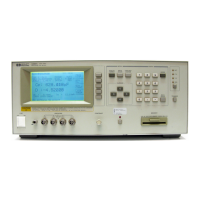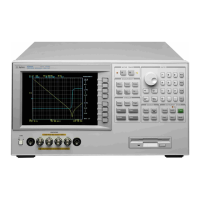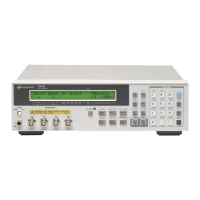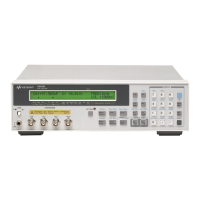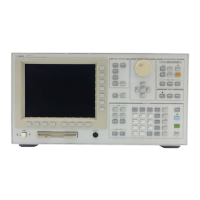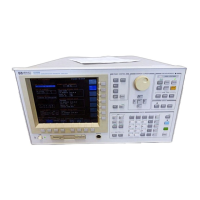136 Chapter 10
Command Reference
:CALC:COMP:BEEP:COND
:CALC:COMP:BEEP:COND
Syntax :CALCulate:COMParator:BEEPer:CONDition {FAIL|PASS}
:CALCulate:COMParator:BEEPer:CONDition?
Description Sets the condition for producing a beep sound: when sorting with the comparator fails
(sorts into any BIN other than BIN1 to BIN9) or passes (sorts into BIN1 to BIN9).
Parameters
Query response {FAIL|PASS}<newline><^END>
Related commands :CALC:COMP:BEEP on page 135
Equivalent key
sequence
[Config]( [Blue] - [-] ) - Beep
:CALC:COMP:CLE
Syntax :CALCulate:COMParator:CLEar
Description Clears the ON/OFF state and range of every limit range (BIN1 to BIN9, the limit range for
the secondary parameter), the limit range designation method, and the reference value for
tolerance mode.
Equivalent key
sequence
[Comprtr]( [Blue] - [1] ) - Limit - Clr - Yes
Description
FAIL (initial value) Instructs the instrument to beep when the sorting fails.
PASS Instructs the instrument to beep when the sorting pass.
